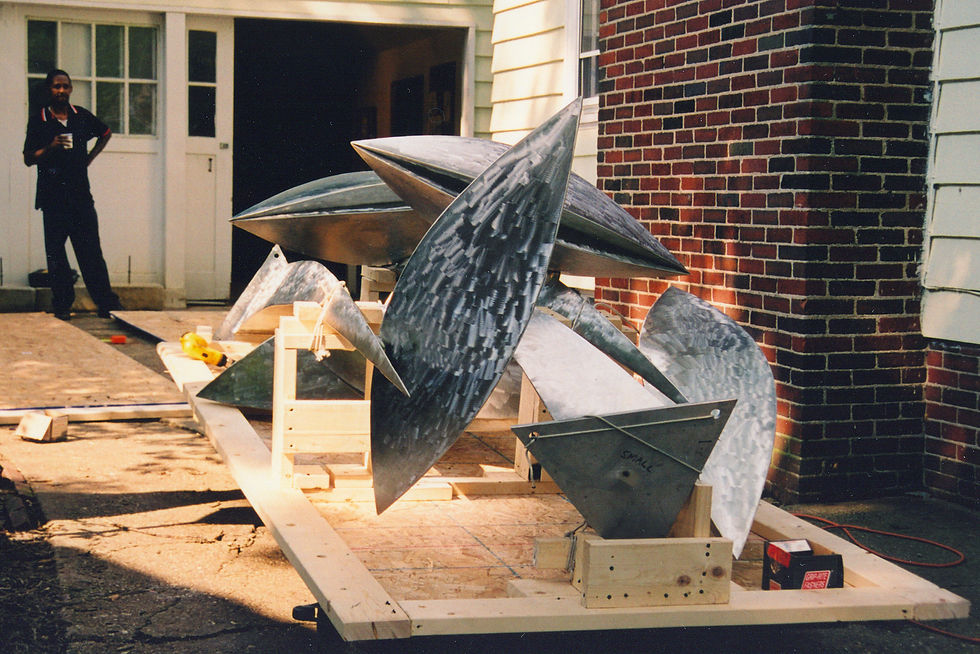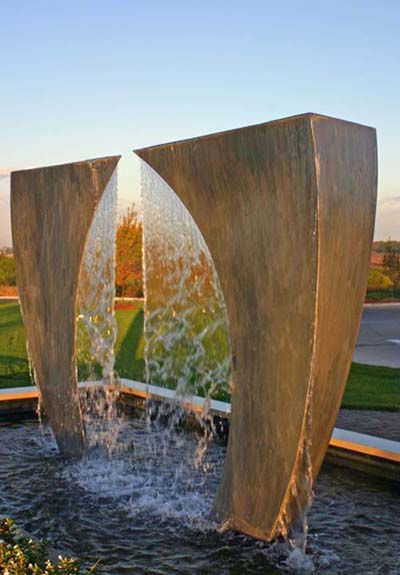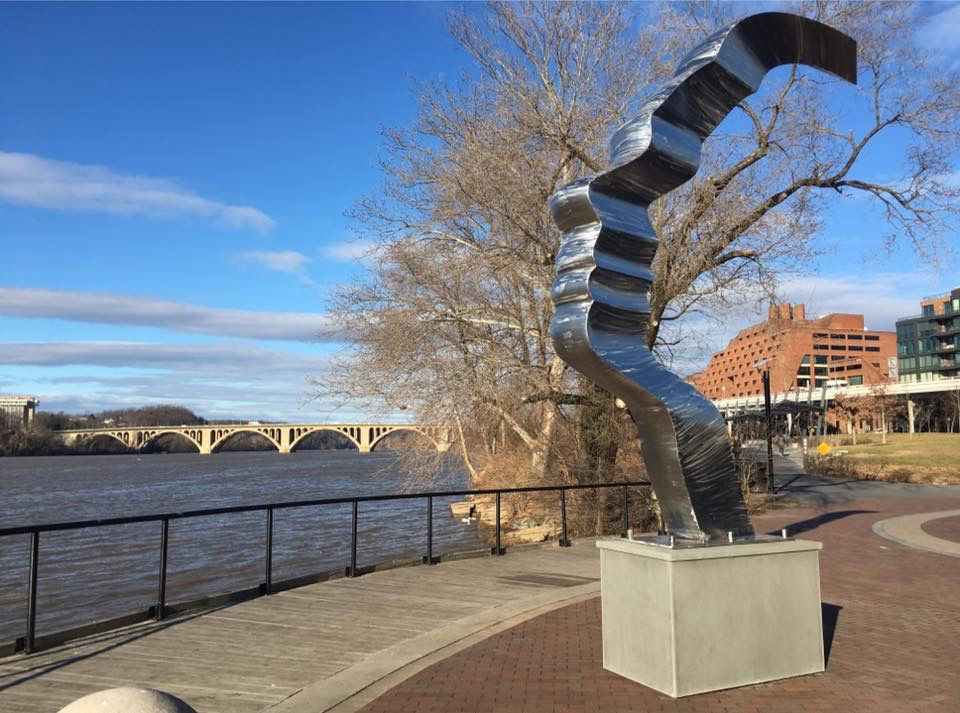Monumental Sculpture: The Soul of a City
- sonya4083
- Aug 8
- 4 min read

When I designed Manna from the Sky for Bridgerland Applied Technology College in Logan, Utah, I set out to create more than a striking visual landmark. I envisioned a monumental sculpture that would act as a cultural anchor, offering inspiration, reflection, and a sense of shared identity for the entire campus community.
The work emerged from winning a national competition, and the commission called for a sculpture that would transform the college’s outdoor environment into a place of meaning and gathering. The concept draws from the biblical story of manna descending from the heavens, a symbol of nourishment, sustenance, and hope. In this interpretation, the manna-like forms embody the idea of unseen support and unexpected gifts that sustain us in times of challenge.
Form, Symbolism, and Materiality
The sculpture’s design features stainless-steel forms delicately suspended from soaring spires. These polished, curvilinear elements suggest both falling and rising, capturing the duality of manna’s descent and the uplifting spirit of those who receive it. The verticality of the spires emphasizes aspiration, while the suspended elements convey lightness and grace, balancing engineering precision with artistic vision.
In art historical terms, Manna from the Sky draws upon a tradition of monumental sculpture that transcends pure decoration, functioning instead as a civic and cultural symbol. Like the great public monuments of the 20th century, from Alexander Calder’s outdoor mobiles to Isamu Noguchi’s civic landscapes, this work is designed to integrate with its site, responding to its environment while elevating the experience of those who move through it.

Interaction with Light and Space
Situated in a prominent outdoor location, Manna from the Sky engages not only with the viewers but with its natural surroundings. Throughout the day, sunlight filters across the suspended forms, casting shifting shadows that animate the ground below. This dynamic interplay of light and form transforms the sculpture into a living part of the landscape, encouraging repeated visits and evolving impressions.
Its scale reinforces its symbolic presence, not merely through height or mass, but through its ability to evoke contemplation. Monumentality here is not about overpowering the viewer, but about creating a focal point that resonates emotionally and intellectually.
“A monumental sculpture must do more than impress with its size, it should embody the spirit of its environment and invite reflection on the human experience.” —Barton Rubenstein
The Role of Monumental Sculpture in Place-Making
For developers, architects, and institutions, Manna from the Sky illustrates how sculpture for public spaces can transform a location into a destination. Monumental works become cultural landmarks—not only enriching the built environment but also fostering civic pride and community engagement.
In a campus context, this sculpture functions as a beacon and gathering place. In a city plaza or commercial development, a work of this scale and meaning can provide identity, invite visitors, and encourage return engagement. For public art for developers, monumental sculpture offers long-term value: it tells a story, embodies shared values, and contributes to the soul of a city or institution.
From its biblical inspiration to its contemporary engineering, Manna from the Sky exemplifies how monumental public art can unite symbolic meaning, visual presence, and technical mastery. In doing so, it becomes more than a static object, it becomes part of the life of its community.

Public Art as a Destination
Beyond its aesthetic and symbolic value, public art creates destinations. A well-placed monumental sculpture becomes a point of orientation, a meeting spot, and a reason to visit a space. In cities and campuses alike, works of this scale draw people in, encouraging foot traffic and fostering social interaction. They often become backdrops for photographs, features in local storytelling, and symbols used in branding for the community or institution. From an urban planning perspective, sculpture for public spaces contributes to placemaking by giving an area a distinct identity, transforming it from a pass-through location into a place where people choose to linger. For developers and civic leaders, this ability to create a destination translates into economic, cultural, and social value that extends far beyond the sculpture’s immediate footprint.





Comments